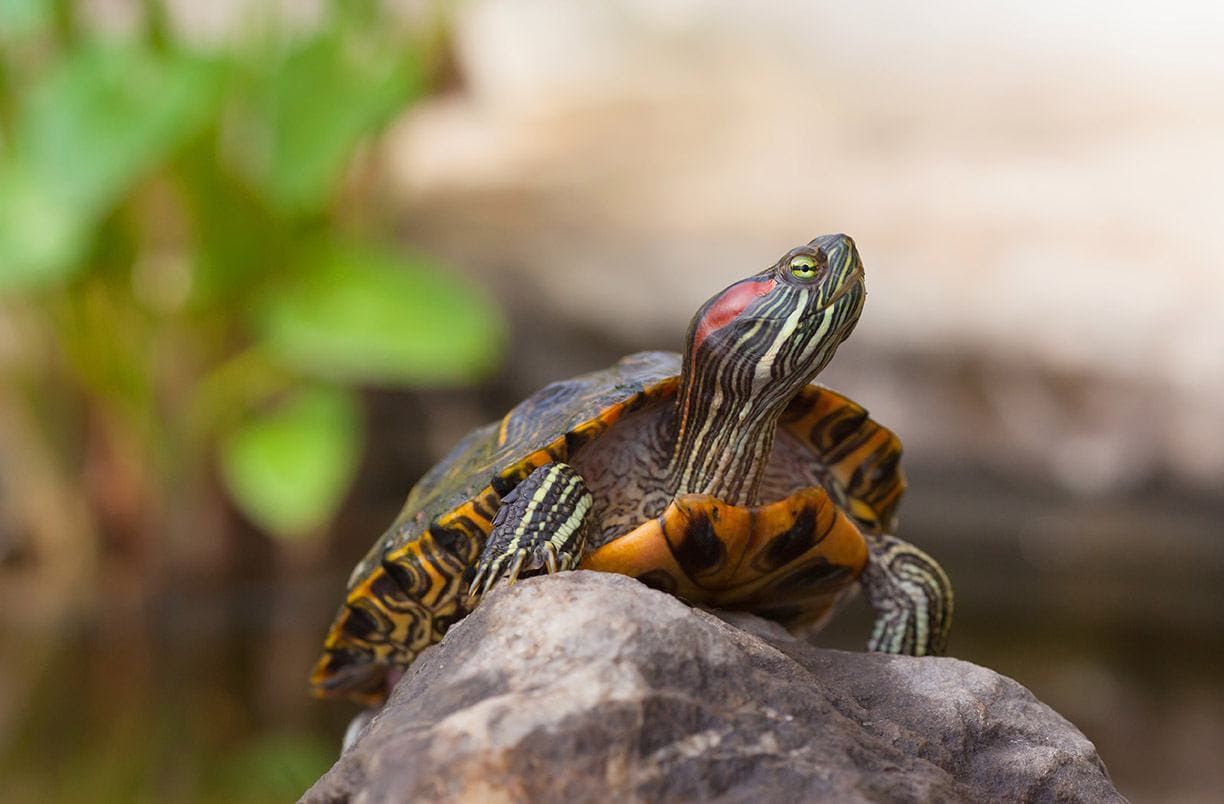

If you were thinking about getting a red-eared slider for your next reptile, we can assure you it’s a good choice. Both novice and experienced owners can enjoy these guys since they are relatively easy to care for.
But as with any other pet, they have some special needs. If you want to know more about the red-eared slider, you’ve come to the right place. We’re going to go over what it’s like to own one of these turtles and how you can adequately care for them.

Red-Eared Slider Facts
Before you buy a red-eared slider, you might want to brush up on the facts. Let’s learn a bit about where this turtle came from and why.
History
The red-eared slider is native to many southern states across the United States, all the way down to the Gulf of Mexico. This semi-aquatic turtle gained quite a bit of traction in the 1950s in the United States.
Some speculate that the real fascination for pet red-eared sliders began in the 1930s when the Ralston Purina cereal company started advertising coupons for free baby turtles. This marketing tactic boomed, sealing the fate of red-eared slider babies everywhere.
Suddenly, red-eared sliders were available through companies, at fairs or carnivals, and in pet stores. They were inexpensive and easy to come by. Soon, these baby turtles were known as dime-store turtles, becoming pets to kids everywhere.
This marketing hype was more trouble than it was worth, as several baby turtles wound up in bad situations. Many youngsters didn’t know a lot about proper turtle care—and neither did their parents. It led to many premature deaths.
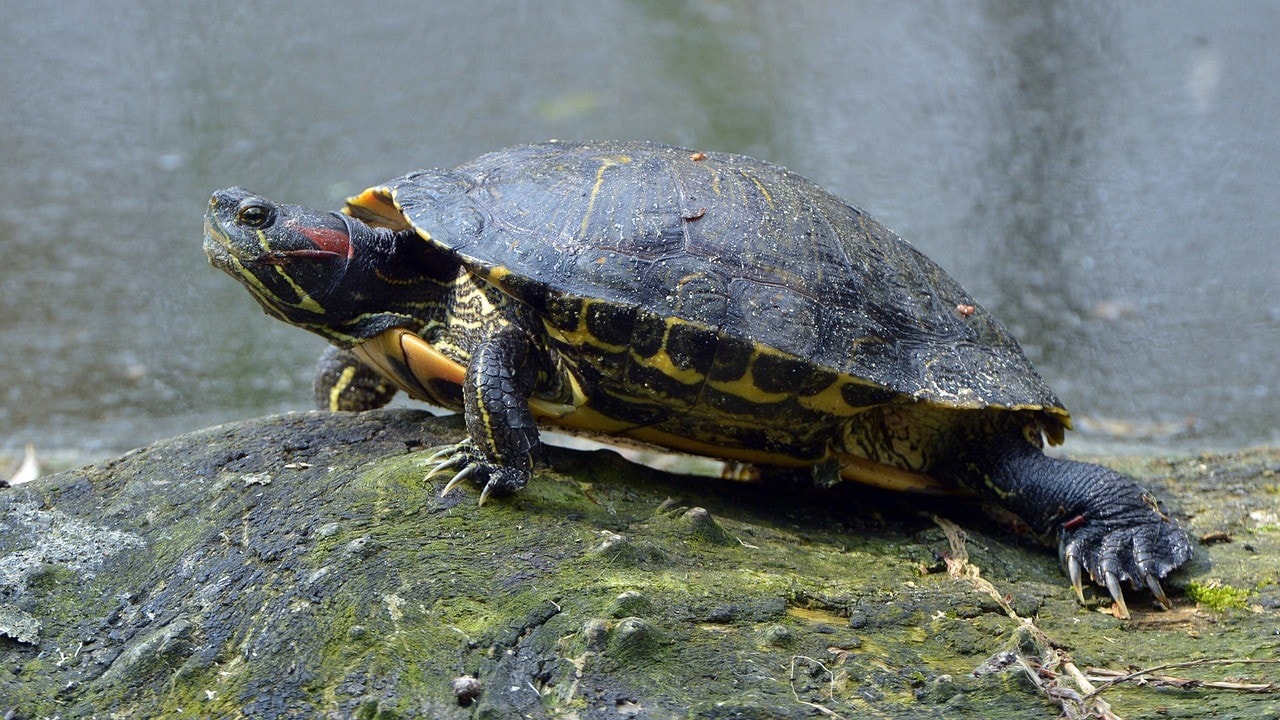
Pets Today
Today, you might not find a red-ear slider coupon in your Shredded Wheat, but you will find them elsewhere. Since light has shone on the neglect, cruelty, and brutal nature of careless turtle distribution, these guys usually wind up in pretty good homes these days.
They are still considered one of the best turtles you can have as a pet. But learning essential care is paramount.
Size
When you buy a red-eared slider, they might only fit in the crook of your hand. But don’t let its tiny size fool you—these guys can get big.
An adult red-eared slider reaches 12 inches long and weighs about 6 pounds.
Varieties
While red-eared sliders will have their own unique designs and colors, they all share the same classic look.
You can find red-eared sliders in combinations of brown, red, yellow, light blue, and green.
Lifespan
If you have a healthy red-eared slider, these big guys can live up to 30 years. So, it’s essential to prepare mentally for the commitment.

Are Red-Eared Sliders Good Pets?
Red-eared sliders can make terrific pets, providing that you’ve done your research on turtle care. This species is a semi-aquatic turtle that requires a specific tank with fresh water, plants, basking spots, and appropriate space.
Where Can I Get a Red-Eared Slider?
You can buy a red-eared slider from many pet stores and aquatic shops. You might also find them from local breeders or hobbyists. Depending on age and variety, these turtles can range from $5 to $100 or more.
Before you bring home your red-eared slider, check them for any oddities to make sure they are healthy and issue-free.

How Much Does It Cost To Own a Red-Eared Slider?
A red-eared slider might seem like a cheap pet that is easy to take care of—and you’re partially correct. But every pet takes commitment, which includes keeping up with tank maintenance, turtle health, and replenishing supplies.
Startup Costs
Startup costs will typically be the most expensive part of turtle owning. You have to get the tank, plants, and other supplies necessary for care. For total initial costs, including the turtle, plan to spend between $100 to $350.
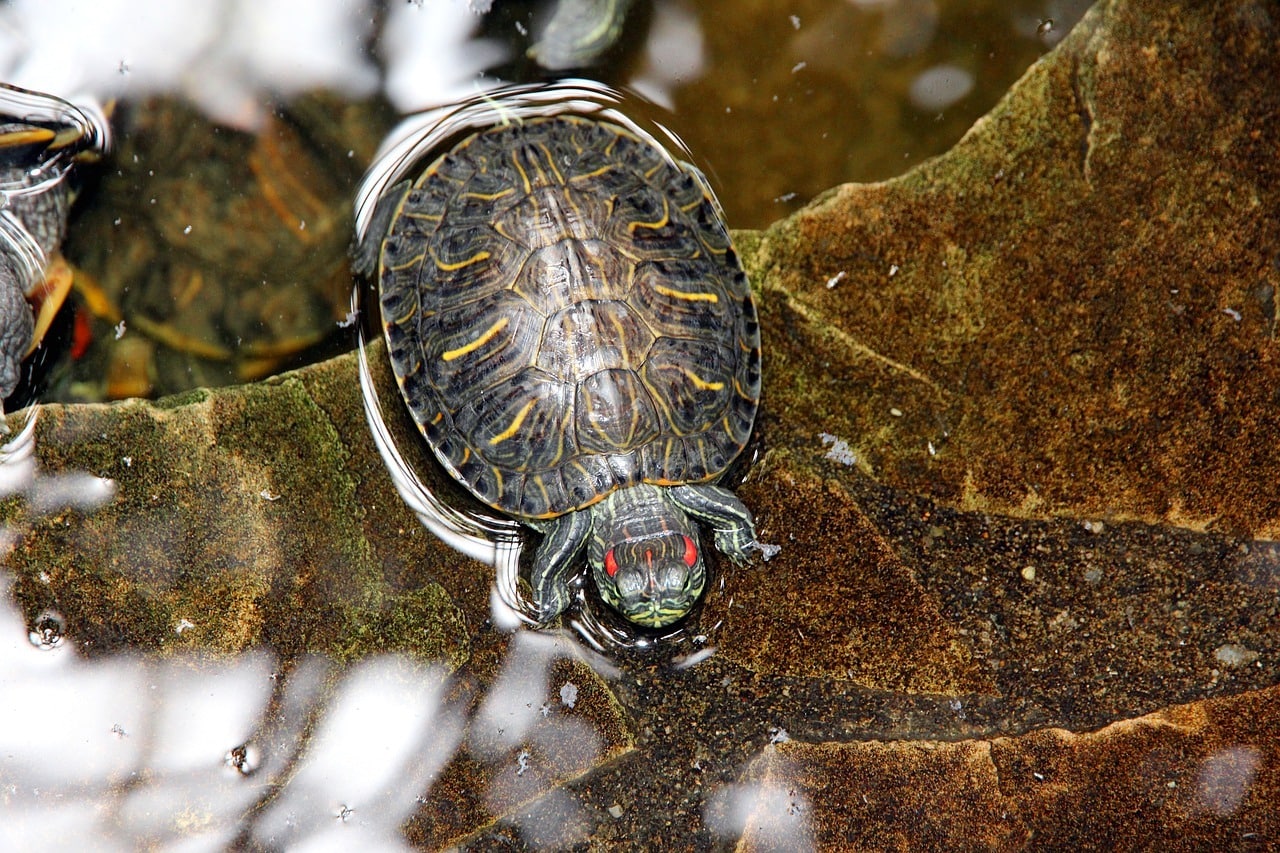
Food Costs
Food costs will increase as your turtle gets bigger. If you have a singular adult turtle, you can expect to pay roughly $30 a month or less on chow.
Vet Bills
Before you even bring your red-eared slider home, you should find an exotic vet that is local to you. Regular veterinarians do not care for many smaller species, including reptiles. Exotic vets also tend to be a bit more expensive than traditional vets.
Most facilities charge $80 to $100 just for the initial visit—not including any testing or medications they might administer. Compare rates and credibility of available exotic vets near you.
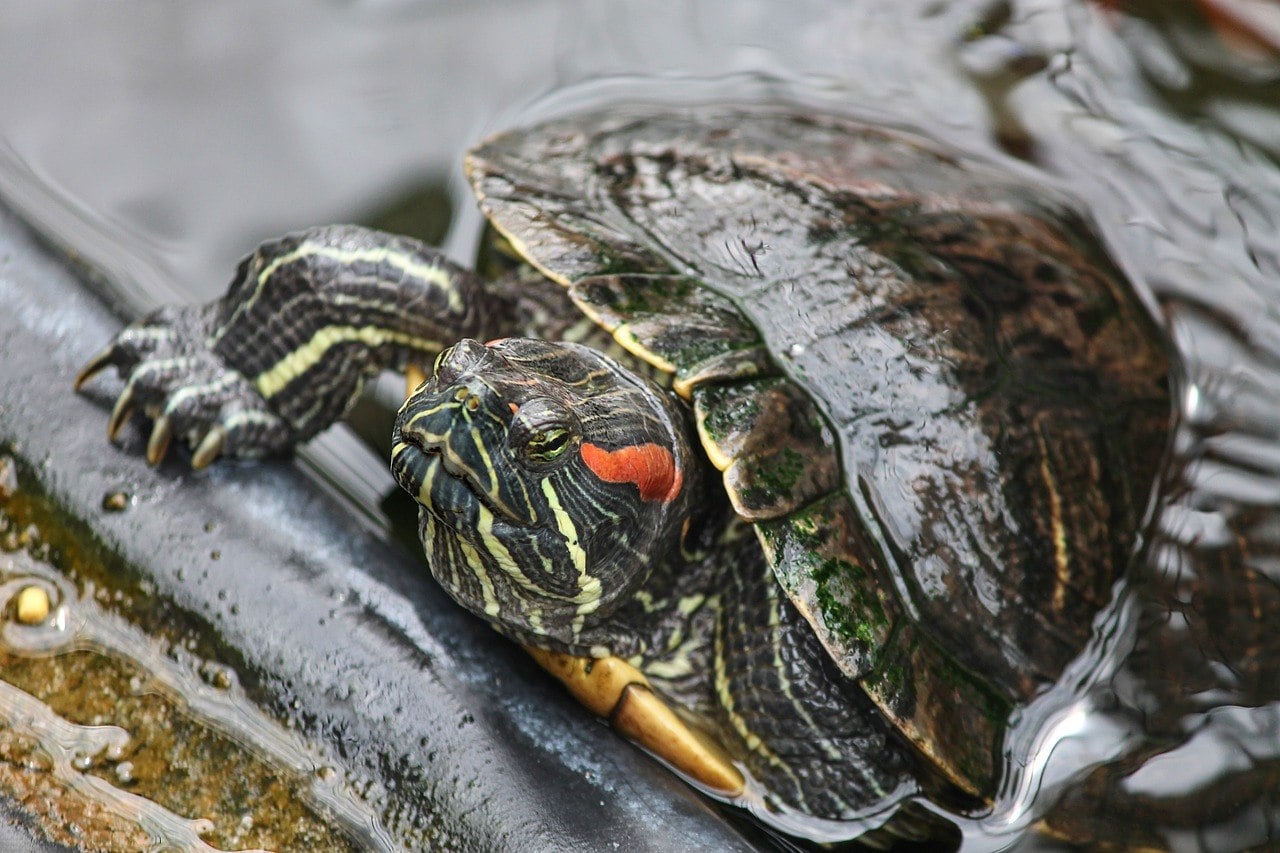
What Kind of Home Does My Red-Eared Slider Need?
Your turtle’s habitat is the most important place in the world—their sanctuary. So, it would be best if you never tried to cheap out on supplies or skip crucial needs.
Tank Size
As hatchlings, red-eared sliders need at least a 20-gallon tank. A good rule of thumb is to increase the tank by 10 gallons for every inch of your turtle’s size.
Since red eared sliders reach up to 12 inches, you can opt for a 100 to 120-gallon tank upfront or increase the size as they grow.
Substrate
Since these turtles are semi-aquatic, they will need plenty of time in the water and have a spot for basking on land. However, they don’t require substrate. A bare tank bottom is sufficient for their wellbeing. But if you like the look of a decorated bottom, you can get gravel or pebbles.
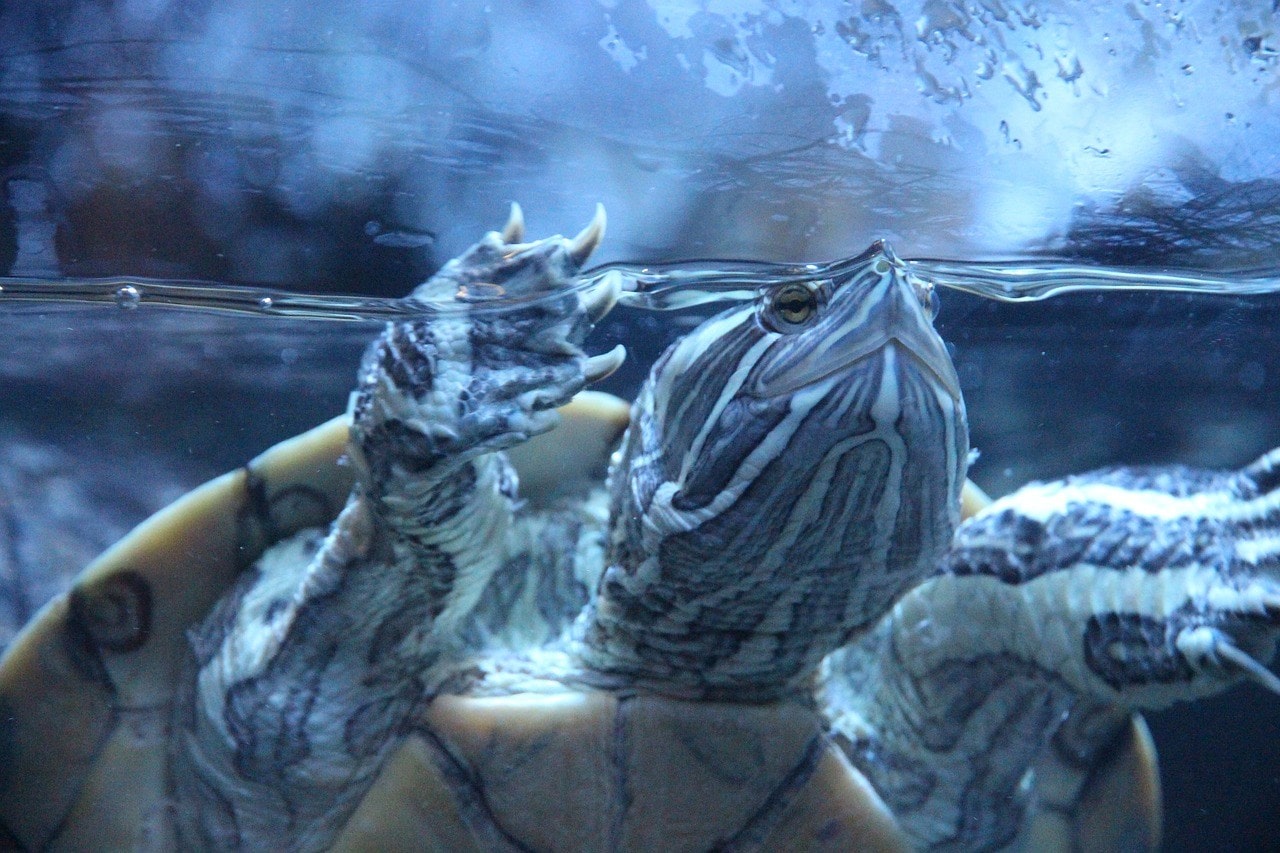
pH Levels
The pH levels for a red-eared slider tank should stay between 6.0 and 8.0.
Lighting
Red-eared sliders need ultraviolet light for calcium balance. It should be 12 inches or less from your turtle during daylight hours, which should be roughly 12 hours per day. During nighttime hours, you should shut off the lamp for a proper sleep/wake cycle.
Heat
Red-eared sliders need a basking area to warm themselves, which should stay between 85 and 92 degrees Fahrenheit. However, the water doesn’t need any special heating, as they prefer room temperature.
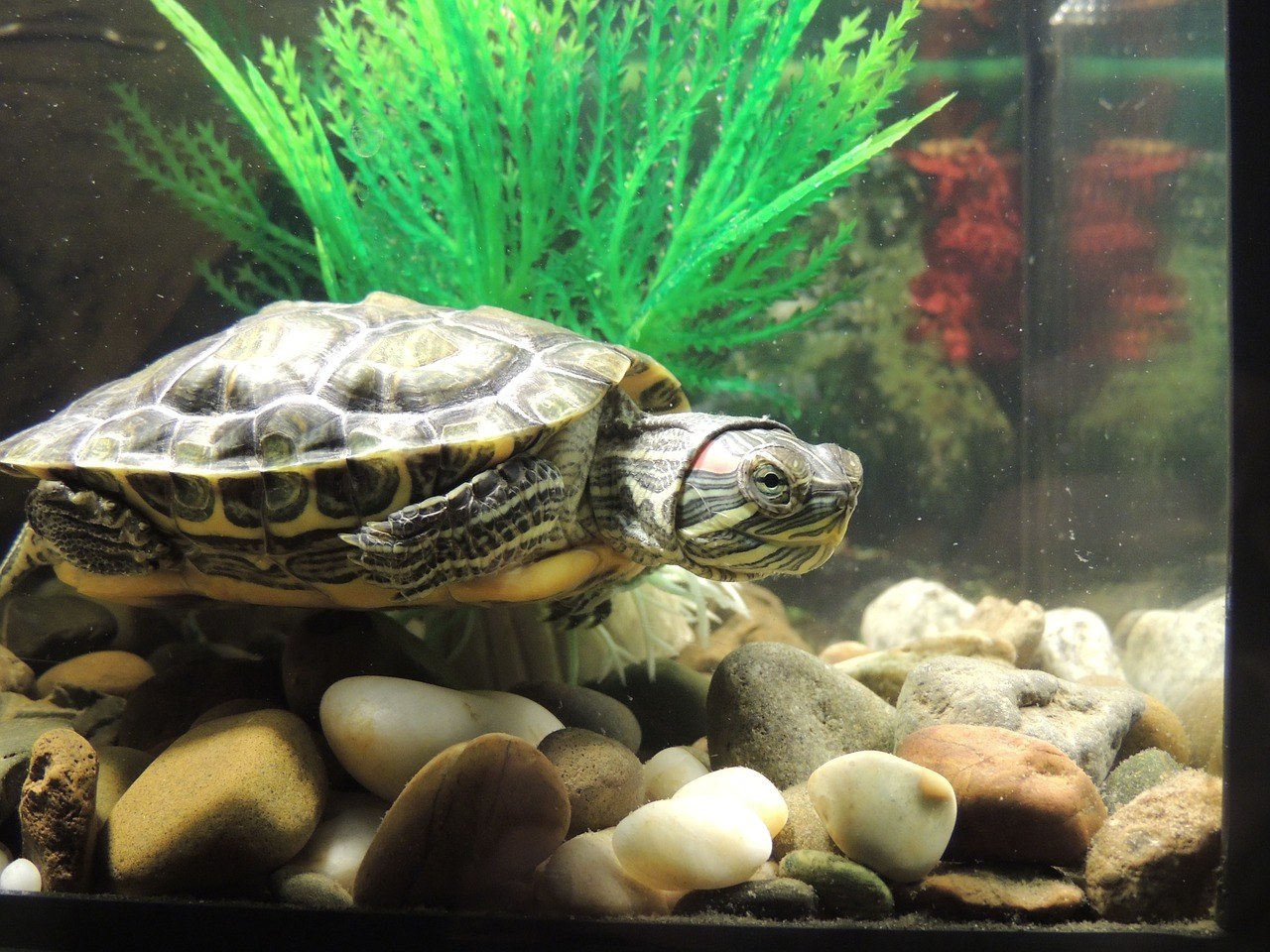
Décor
You can decorate the cage as you see fit with either artificial or live plants. You can also place aquarium-friendly objects to make the setup aesthetically pleasing.
Tank Mates
You can have more than one red-eared slider, but you should have the tank space to accommodate both.
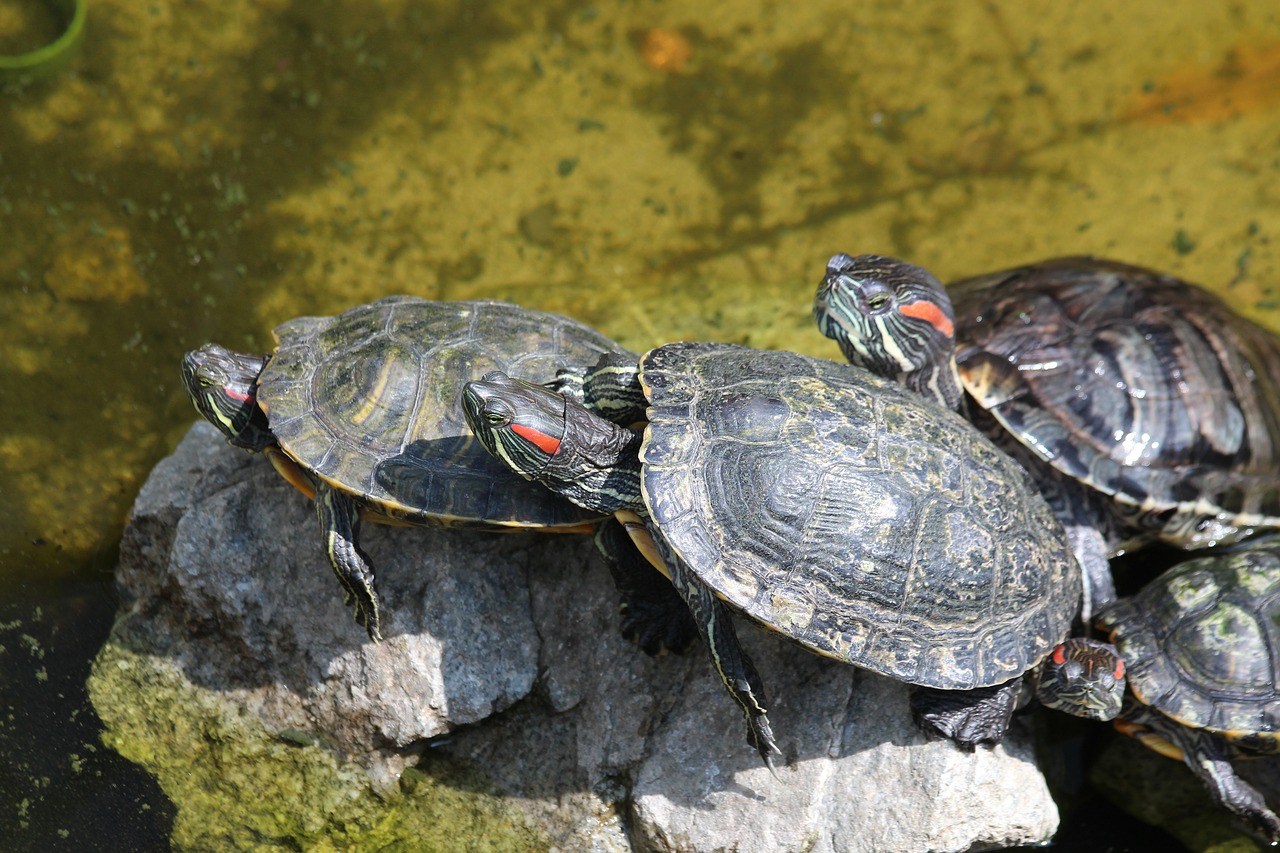
What Should I Feed My Red-Eared Slider?
Red-eared sliders are omnivorous, meaning they eat both plant and animal matter. In the wild, they feast on aquatic plants and small animals, like frogs.
However, a pet can eat commercial turtle food. You can find these pellets at local pet shops or online for purchase.
You can give them occasional yummy snacks such as:
- Freeze-dried krill
- Water lettuce
- Duckweed
- Dark, leafy greens
- Small goldfish
- Earthworms
- Insects
- Squash
- Carrots
- Zucchini
Your turtle shouldn’t overeat, so offer snacks sparingly—only once or twice per week.

How Do I Take Care of My Red-Eared Slider?
Knowing how to care for your turtle appropriately is the key to lifelong happiness. Here are some key care tips for your red-eared slider.
Feeding
You should feed your red-eared slider once a day based on their age and weight. You can offer snacks a few times per week, but don’t give them too many goodies at once. Even turtles can become obese!

Handling
You might be able to hold your red-eared slider sometimes, but it does cause them stress. So, try to keep sessions short or pet them in their enclosure instead. If they feel threatened, they might nip or hide in their shell.
Filters
You can use submersible or internal filters for your turtle’s water. It helps maintain water flow and clean the cage, so you have to change the water less frequently.
Changing Habitat
Old food and waste can make the water icky. Debris can get the tank dirty quickly, so always make sure to clean gravel or remove remnants of food as needed. The frequency will depend on how big the aquarium is and how many turtles you have.
A good rule of thumb is if the water seems dingy and you can see collecting particles, clean the water. Dirty water can lead to shell infections.
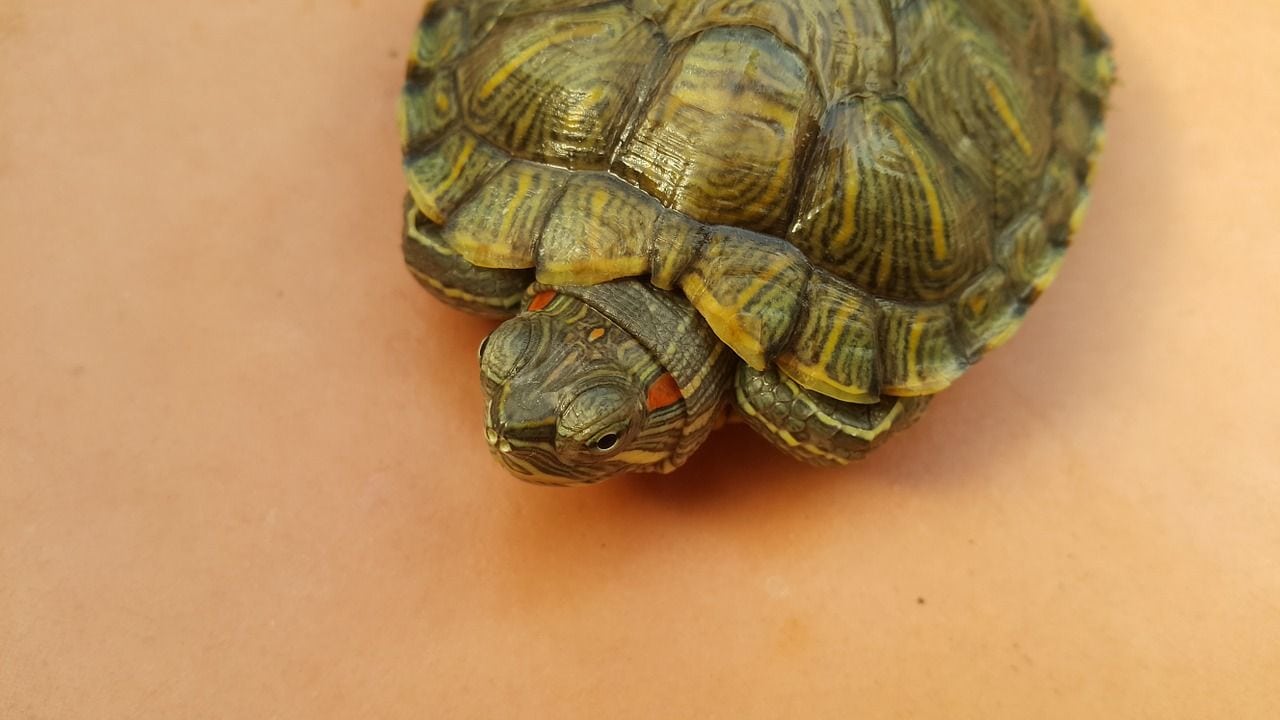
How Do I Know If My Red-Eared Slider Is Sick?
When properly cared for, these turtles are typically very healthy critters. But they might run into some issues. Here are a few common ailments and their symptoms.
Cystic calculi
This disease causes minerals to crystalize in the urine, which leads to bladder stones. You might notice blood in their droppings as a sign something isn’t right.
Skin and shell sloughing
Shedding is a typical turtle trait and isn’t anything to worry about. However, if the shedding pieces come off in chunks and leave open bleeding areas, it could be a sign of bacterial or fungal infections.
Shell trauma
Your turtle’s shell is hard and protective, but even it can’t hold up with great force. If your turtle is dropped by accident, it could cause a shell fracture. Most shell trauma, unless very severe, is repairable.
Shell growth issues
Usually, due to improper calcium levels in the diet, your turtle might experience shell growth issues. If you don’t address the problem, it can lead to more significant issues like metabolic bone disease.
Prolapse
Any part of your turtles downstairs may prolapse, causing their parts to emerge from their vent. It can happen to the penis, intestines, bladder, or cloaca—and it can be life-threatening.
Dystocia
If you have a female, they might have egg binding issues that can be life-threatening. These problems are usually due to poor environmental factors. An egg-bound turtle might not eat or appear sluggish and inactive.
If you notice anything out of the ordinary, take your turtle to your exotic vet without hesitation. Some problems can be far advanced by the time you see symptoms.

Conclusion
Red-eared sliders can be incredibly rewarding reptiles to own. All they need is the proper owner willing to give them the environment they need to live happily in captivity.
If all this information made you positive, you want a red-eared slider, good luck on your turtle search. You can find these cute critters easily, but just make sure you pick a healthy specimen. If your turtle is acting sluggish, shows deformities, or lacks solid color, don’t buy.
Featured Image Credit: Sergii Votit, Shutterstock
Ashley Bates is a freelance dog writer and pet enthusiast who is currently studying the art of animal therapy. A mother to four human children— and 23 furry and feathery kids, too – Ashley volunteers at local shelters, advocates for animal well-being, and rescues every creature she finds. Her mission is to create awareness, education, and entertainment about pets to prevent homelessness. Her specialties are cats and dogs.







